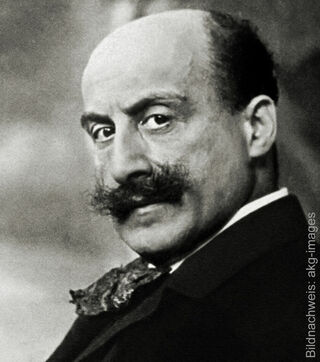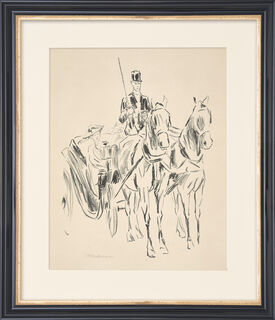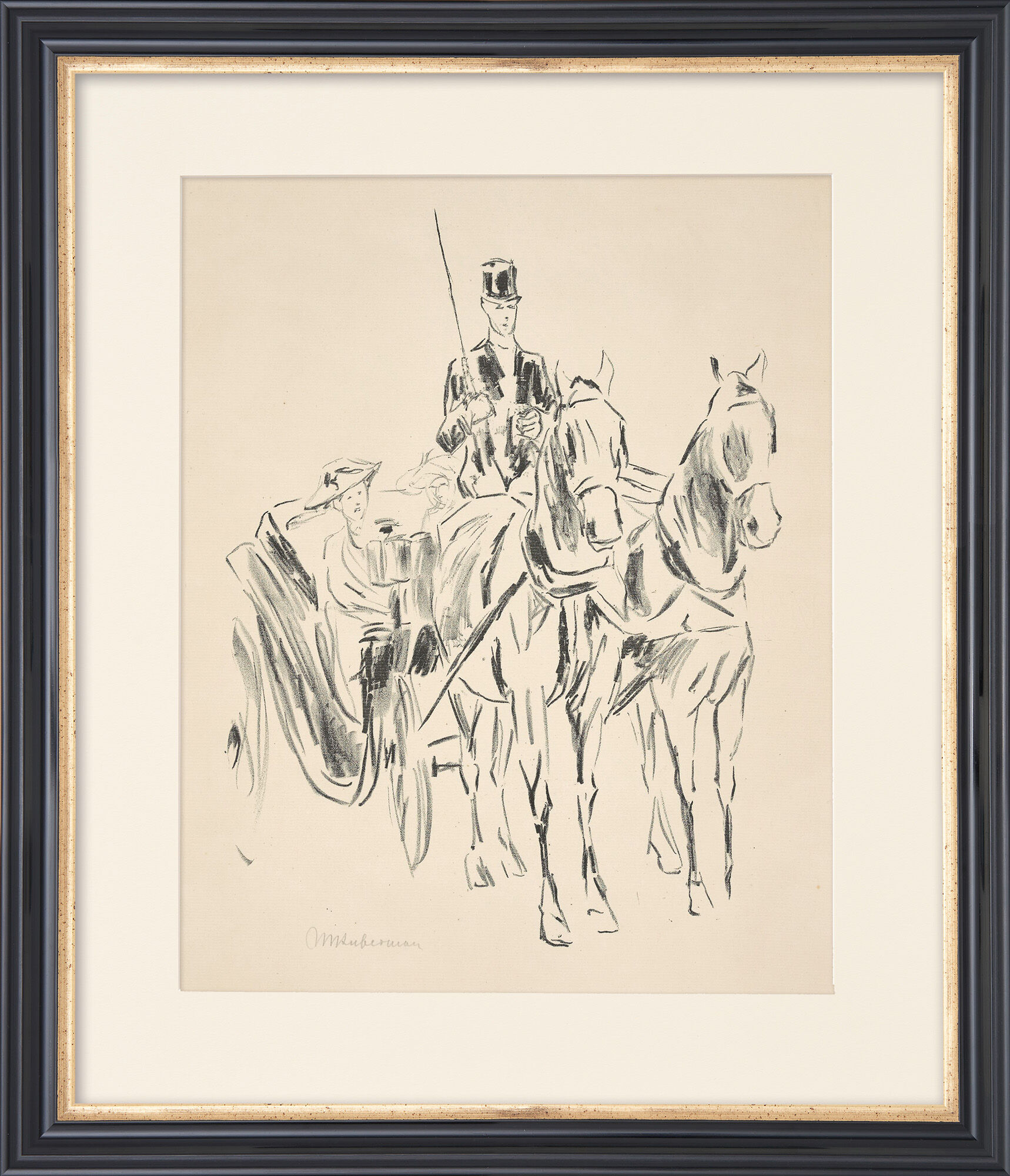Picture "The Carriage" (1914) New


Picture "The Carriage" (1914) New
Quick info
limited, 50 copies | signed | lithograph on handmade paper | framed | size 56.5 x 46 cm
Detailed description
Picture "The Carriage" (1914)
The lithograph presented here, from the small edition of only 50 copies from 1914, documents a carriage ride by two elegant ladies, perhaps in Berlin's Tiergarten. The subject of the horse, the carriage and the ride inspired the artist to create numerous atmospheric paintings, prints and watercolours.
Lithograph, 1914, edition of 50 copies on handmade paper, signed. Catalogue raisonné Schiefler 163 I (of II). Catalogue raisonné Schneider 72. Motif size 35.5 x 27 cm. Sheet size 50.5 x 37.4 cm. Size in frame 56.5 x 46 cm as shown.

About Max Liebermann
1847-1935
Together with Lovis Corinth and Max Slevogt, Max Liebermann formed the triumvirate of German Impressionism and received numerous honours throughout his life. Through his commitment to elevating the life and work of ordinary people to art in unpretentious simplicity meant that Liebermann initially had to fight for recognition.
Liebermann only became a celebrated painter at the turn of the century when he increasingly devoted himself to motifs and scenes from the life of the upper-middle classes. He was an appointed professor at the Royal Academy and a member of the jury at the Academy exhibitions in 1897. In 1899 he founded the Berlin Secession and made it the most important German art institution. In 1920 Liebermann became president of the Prussian Academy and in 1932 its honorary president.
Because of his Jewish ancestry, he was ostracised by the Nazis and forced to resign from all offices. While watching the Nazis celebrate their victory by marching through the Brandenburg Gate from the window of his flat Liebermann supposedly said: "I can't eat as much as I want to vomit." In 1935 he died at the age of 87 after a long illness.
For Max Liebermann, nature was always a man-made (and man-inhabited) paradise. He found his motifs in gardens, parks and in bourgeois places of amusement. Liebermann is a master of staged light, which he lets fall on his scenes, often filtered through a canopy. The individual beams of light that penetrate to the ground are striking and have gone down in art history as "Liebermann's sunspots".
The field of graphic arts, that includes artistic representations, which are reproduced by various printing techniques.
Printmaking techniques include woodcuts, copperplate engraving, etching, lithography, serigraphy.
Depiction of typical scenes from daily life in painting, whereby a distinction can be made between peasant, bourgeois and courtly genres.
The genre reached its peak and immense popularity in Dutch paintings of the 17th century. In the 18th century, especially in France, the courtly-galant painting became prominent while in Germany the bourgeois character was emphasised.


